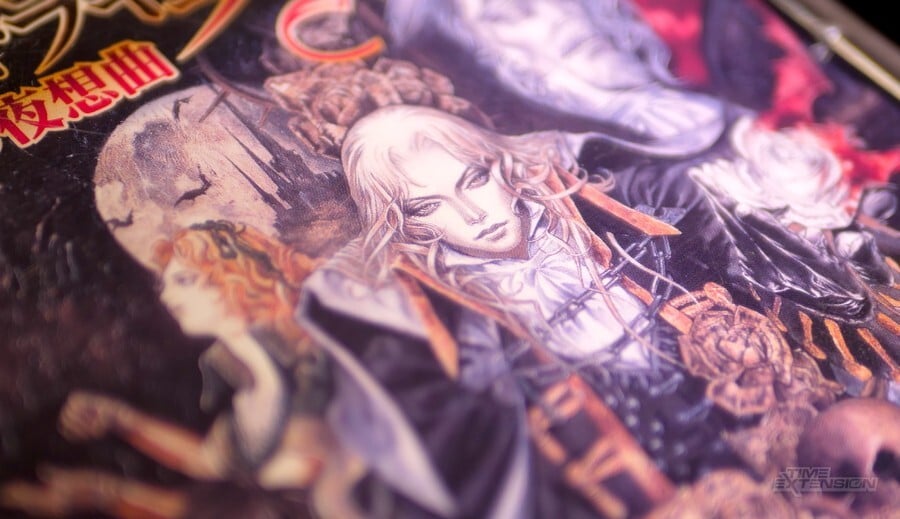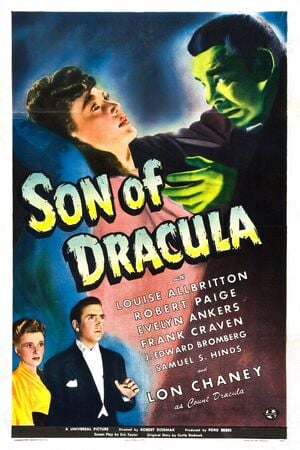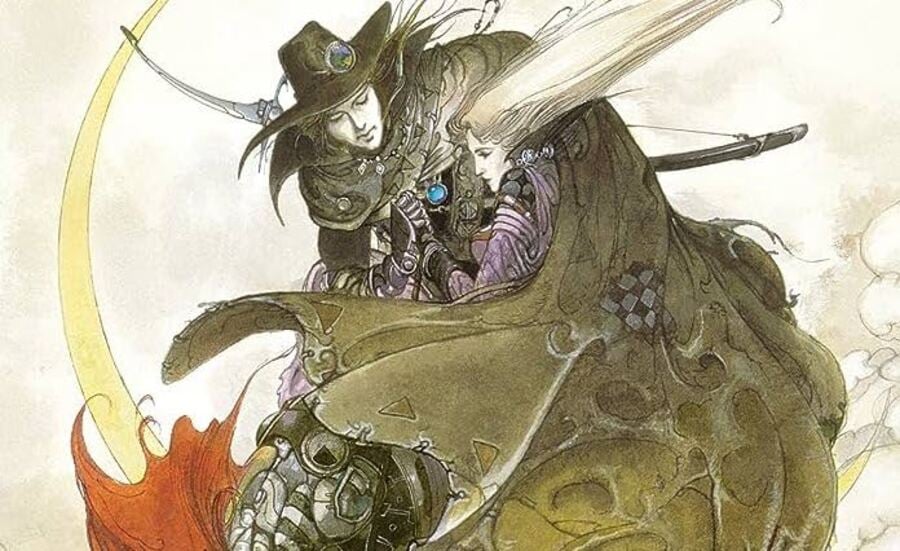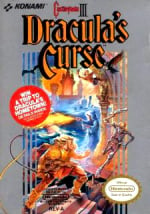
There are few characters from the Castlevania series that are as popular or as iconic as Alucard.
The son of Dracula has made appearances in many Castlevania games over the years, as well as the Castlevania Netflix show, becoming something of a fan favourite, thanks to his tragic backstory, satisfying abilities, and elaborate character design.
As you may well know, Alucard didn't always appear as he does today, with his trademark long, white hair, skinny physique, and impeccable dress sense. Back when the character first appeared to players in Castlevania III: Dracula's Curse in 1989, he was designed to simply be a mirror image of his father, sporting a very similar look. It was only with his later reappearance in Symphony of the Night in 1997 that he started to develop more of an identity of his own, getting a new look courtesy of artist Ayami Kojima, a new name (Adrian Fahrenheit Tepes), and an expanded biography fleshing out his origins.
In the past, there's been some debate over what, if anything, inspired Konami to make these changes to the character with fans suggesting everything from Vampire Hunter D to Tom Cruise's performance as Lestat De Lioncourt in the 1994 film Interview With A Vampire had a part to play in the decision-making. So here at Time Extension, we recently took it upon ourselves to dig into the history of the character and these potential influences to try and find out as much as we could. This investigation involved reaching out to ex-Konami developers, scouring the web for official sources, and teaming up with the English-to-Japanese translator Liz Bushouse to access a previously untranslated interview with the series artist Ayami Kojima.

Before we get into all that, though, we should probably take a little bit of a closer look at how the original incarnation of Alucard came to be, which means examining the 1943 Universal film Son Of Dracula by the German director Robert Siodmak.
As many will no doubt already know, the original Castlevania games for the NES contained a ton of references to the Universal horror movies of the '30s and '40s, including a rogues gallery of Universal creatures like mummies, werewolves, and even Frankenstein's monster. However, what you may not be aware of is that Alucard is also an extension of this, being a tribute to Lon Chaney Jr.'s 'Count Alucard', from Son Of Dracula — the originator of the Alucard name.
Son of Dracula is the third film in the Universal Dracula series and sees the enigmatic Count Alucard travelling to New Orleans to contact a student of the occult named Katherine Caldwell. Upon meeting her, he immediately sets out to seduce her, leading the girl's former love interest to grow increasingly suspicious and eventually attempt to rescue her from the supernatural being.
As probably expected from a horror sequel from the era, the plot can get a little bit ridiculous in places, but overall, it is a beautifully shot film and features some genuinely heartfelt moments between the stars Robert Paige and Louise Allbritton. The most significant reference to the film featured in Castlevania III obviously comes from its borrowing of the name Alucard for its own portrayal of Dracula's offspring, but there is also another interesting similarity worth highlighting. In both Son of Dracula and Castlevania III, Alucard first appears to the protagonist as a vampire bat, before later making their true form known, with both of these encounters initially taking place in a swamp. Whether this is intentional or not is a bit of a mystery, but it is certainly close enough to merit a mention here.
Following the release of Dracula's Curse, Alucard would vanish from the series for eight years, remaining absent from Super Castlevania IV, Castlevania: Bloodlines, Castlevania: Rondo of Blood, and Castlevania: Dracula X. Then, in 1997, Konami released Symphony of the Night for the PlayStation 1, featuring a redesigned version of the character as its primary protagonist. This was the first time a Belmont wasn't the star of a Castlevania game.
In a Japanese interview (translated into English by Shmupulations), Symphony of the Night's main producer and director Toshiharu Furukawa explained the reasoning behind this. "From a visuals perspective, we thought it would be cool to have a stylish man as the lead. The image of Simon in the instruction booklet of the very first Famicom Akumajou Dracula was slender and stylish. But somewhere along the way, the Belmont image got changed to a pumped-up, musclebound man… and Symphony of the Night seemed like a good chance to change that image. I also think the “Akumajou” (demon castle) title doesn’t really suggest Simon Belmont as the main character, though that might be overstating things."

Along with the change in lead, there was also a switch in visual style from an anime-esque look to one inspired by Baroque art. In the same interview, the game's assistant director Koji "IGA" Igarashi gave more information on how the team went about changing the visual style, claiming that they visited various bookstores to look at the covers for illustrators who may be a good fit. It was there that they discovered the work of Ayami Kojima, an up-and-coming artist who had started out making doujinshi to sell at Comiket in Tokyo before getting a call from publishers to start illustrating other author's novels. As Igarashi states, there were many illustrators considered, but ultimately, Kojima "had the rich, aesthetic direction we wanted for a new Castlevania."
"I was wondering why they chose me," Kojima recently said about the decision in a 2023 interview with Full Frontal, "But they said they wanted my illustrations’ style and atmosphere. Another thing is that I was asked to draw certain things that were really different from what I was used to, for example, cute girls and young boys."
Kojima's redesign gave the character of Alucard a much more moody, effeminate look, which many have attributed to the influence of Interview With A Vampire or Vampire Hunter D. While we couldn't find anything regarding a connection to Lestat — except that Ayami Kojima may have illustrated some postcard sets referencing the film at some point under her pen name Kuronuma Odile (when exactly is hard to verify) — we did manage to come across this interview for a Castlevania strategy guide where Koji Igarashi seems to confirm D was an influence on the character in later games.
"I can tell you the original Castlevania Series never got inspired by Vampire Hunter D," says Igarashi, regarding the original NES trilogy. He then continues, "Yet, as the series went on and various products came out, I can say that some of them were inspired by the novel. Personally speaking, I like D. I can tell you Alucard is inspired to some extent."
What's interesting to note here is that Kojima later went to work with Hideyuki Kikuchi, the author of Vampire Hunter D, on several of his novels. In a previously untranslated 2011 interview for her art book Santa Lilio Sangre, Kojima described the process of working with Kikuchi-san, and from the sounds of it, she could just as easily be talking about the design of Alucard.
Kojima states, "The people who appear in Mr. Hideyuki Kikuchi's stories are generally not normal people; they're more like monsters or inhuman beings. So with them, I go for a more otherworldly beauty or make them beautiful outwardly, but with a hint of unearthliness or ghastliness. I think I'd have a really hard time if someone told me to draw just a normal, beautiful high school girl. I do like the sort of energetic beauty that girls have, of course, but I'm sure if I tried to draw one, she'd end up twisted in some way, haha."

Elsewhere in the interview, Kojima also gave some general influences for her work, such as the images "of faeries and fantastical beasts" she grew up seeing in children's media.
"I think I've been greatly influenced by the stories and images I saw as a child, too," she continues. "I always had a love for encyclopedias detailing unknown worlds, adventure and fantasy novels, as well as tokusatsu, like monstrous people and that sort of thing. Monstrous beasts easily fall into the realm of unknown creatures, but monstrous people are often humans who've been fused with creatures that have special abilities. I liked the dreamlike quality of worlds like that. The general image people get when they think of a monstrous person is probably something decidedly not beautiful, but I think they're great because they retain all the useful abilities from each of the parts that compose them."
Besides Kikuchi's work, there may have been another important influence on Kojima's art: that is, the Swedish child actor Björn Andrésen. Andrésen is arguably best known for his breakout role as Tadzio in Luchino Visconti’s 1971 adaptation of Death in Venice and was the subject of a 2021 documentary film called The Most Beautiful Boy In The World. The film details his struggles with fame and his remarkable influence on a string of Japanese artists like Riyoko Ikeda and Keiko Takemiyo, following a Japanese press tour in the early '70s.
The film essentially argues that, following Andrésen's trip to Japan, he became a template for bishounen-characters (bishounen roughly translates to "Beautiful Youth") in Japanese manga and anime, with Ikeda going so far as to tell the filmmakers: "I think all we manga artists are inspired by him on a deeper level. Each one of us but in different ways.”
Looking at Alucard, it's easy to see why some people have drawn a connection between the Castlevania character and Andrésen, given the similarities between their appearance and Ayami Kojima's penchant for drawing her characters in the bishounen tradition. However, we wanted to see whether there was any truth to it. So we reached out to a number of developers who worked on Symphony of the Night, combed various Japanese websites and interviews, and tried our best to find a way to contact Kojima. Sadly, though, this didn't prove as successful as we hoped.
Those we spoke to who had worked on the game were very helpful, but could not say for definite if Andrésen had been an influence. The Japanese websites we visited, meanwhile, didn't turn up anything but a comment from a random Japanese user who also made the comparison.
As for Kojima, all our methods of contacting her were a bust. We tried reaching out to her ex-colleagues, her publishers, and the organizers of events like Magic Monaco, who booked her earlier this year for a rare public appearance, but we were either met with silence or comments explaining that they were no longer in touch and sorry they couldn't help further.
It's a slightly frustrating way to end the investigation, we admit, but hopefully, in the act of publishing this, it may inspire someone to do what we couldn't and actually ask Kojima directly about these potential influences to help further separate the facts from reality.
Alucard is one of the most iconic video game characters in history, and it's remarkable that details about his creation remain open for speculation. At the very least, we were happy to finally locate a source (via the VGMuseum) for the claims that Konami was inspired by Hideyuki Kikikuchi's 'Vampire Hunter D' and are grateful to Liz Bushouse for translating the Santa Lilio Sangre interviews, which gives us a slightly better insight into Ayami Kojima's creative process.
We'll potentially try to resurrect this investigation in the future, but for now, at least, we've exhausted all our possible leads.
Are there any influences you believe we've missed? Then please let us know in the comments!







